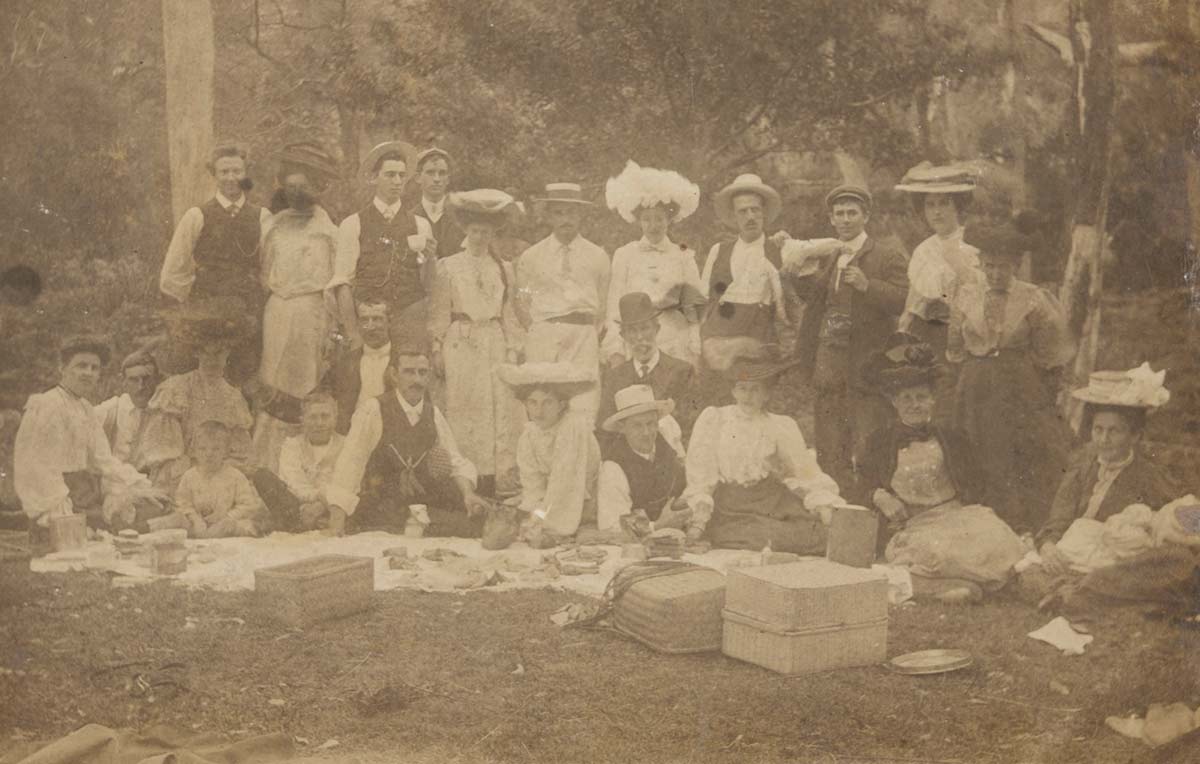Lockdown life has been no picnic, but with spring comes the return of an activity that has been enjoyed for generations.
The Age, 2 January 1936:
Hundreds of people spent the day on the fresh green lawns grateful for the kindly shade … grown-ups resting in comfortable deck chairs, babies sprawling on rugs or on the sweet-smelling grass, and the children, energetic in spite of the heat, having a Jolly time with games.
Although referring to a long-ago summer afternoon in Melbourne’s Botanic Gardens, these words just as readily describe recent balmy days in Canberra. As lockdown restrictions ease across New South Wales, Victoria and the ACT, picnicking is firmly back in vogue.
Admittedly, today’s pandemic picnic is guided by ventilation and distancing requirements just as much as the thrill of dining alfresco. But this winning formula has lost none of its appeal over time.
History of picnicking
Australians have long been dedicated picnickers. Local excursions on foot, or further afield by bicycle, horse-drawn vehicle, road and rail have been popular summer pastimes since the late 19th century.
Judging by our collection, picnicking reached its zenith between the 1880s and the interwar years. Families, friends or trade and religious communities gathered, sometimes in their hundreds, to zealously overeat and laze away an afternoon in good company.
A refreshing change of scene marked a break with the working week. Other than a well-stocked hamper, picnics didn’t require fiddly or expensive equipment and could be arranged on a whim.
The Colac Herald, 1 January 1886:
A furniture van packed with humanity and hampers, a concertina or accordion, bright, happy faces, and there you have the essentials for a picnic party.
Picnicking variety
This reckless spontaneity was inspired by numerous transport options. In Victoria, relaxed licencing regulations allowed rollicking groups of suburbanites to head for the hills and beaches in an inexpensive hired van.

Multiple convenient pickups, and a breezy disregard for the dangers of overloading, encouraged new friendships across the city, as well as unrivalled possibilities for romance and high jinks.
Younger picnickers could mingle mostly unchaperoned, cosy up around a shared hamper and cram into the van on the way home.
Amid growing road safety concerns, by the 1950s the picnic scene gradually shifted towards more structured railway and bus travel.
But it has never really left. This spring, let’s all enjoy the quiet delight of sitting in grassy shade, perhaps with a water view, while messily sharing a takeaway with our beloveds. And for a while, perhaps, we can forget about the pandemic.
In our collection






